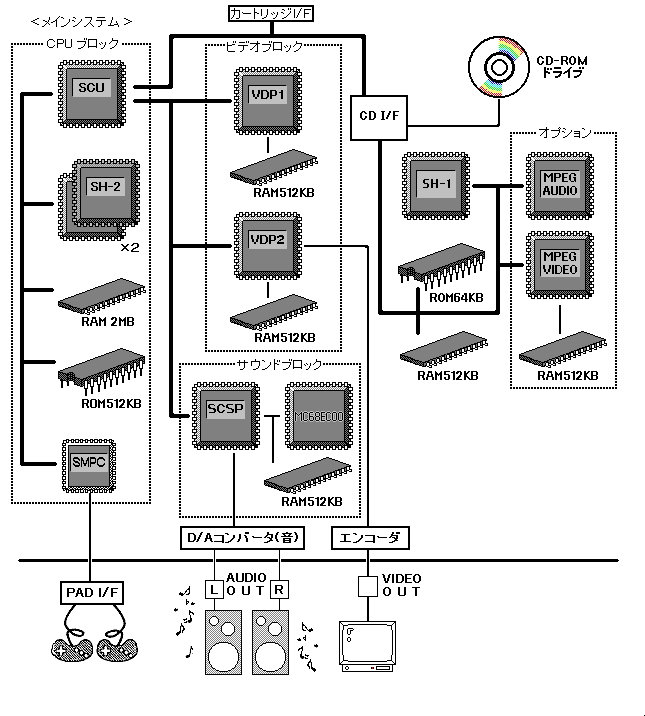■ 2.1 hardware specifications
CPU block | CPU | SH-2 x 2 |
RAM | 2MB | |
ROM | 512KB | |
SCU | DMA 2ch | |
SMPC | RTC 1MHz (accuracy) | |
Video block | VDP1 | Up to 400,000 pixels 1/60 second transfer |
VDP2 | Screen resolution 320 dots wide x 224 dots high Background screen Up to 5 screens | |
RAM | 512KB for VDP1 | |
Sound block | SCSP | PCM32ch up to 44.1KHz |
RAM | 512KB | |
CPU | MC68EC000 |
CPU | SH-1 |
RAM | 512KB |
MPEG AUDIO / VIDEO | RAM 512KB |
■ 2.2 System configuration
Figure 2.1 Block diagram
■ 2.3 Explanation of each part
● Main system side
You can also display polygons in addition to sprites.
For color (picture), convert analog RGB to video signal (encoder).
 ★ HARDWARE Manual ★ Sega Saturn Overview Manual
★ HARDWARE Manual ★ Sega Saturn Overview Manual